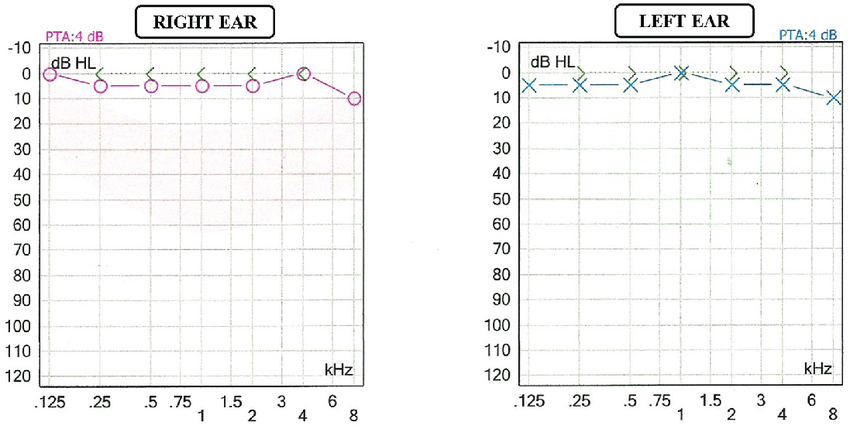PURE TONE AUDIOMETRY
Definition: This test gives a qualitative and quantitative analysis of patients hearing. The frequency range tested in 125 Hz to 8000 Hz.
Aims of audiometry:
Sensorineural hearing loss may be congenital or acquired. Congenital
Birth trauma.
- Analysis of the patients hearing loss. (conductive hearing loss, sensorineural hearing loss or mixed).
- For pre-operative and post-operative evaluation.
- Medico-legal purposes.
- For prescription of hearing aid.
- In malingering patients.
Procedure:
:
It is carried out in a sound proof room. Air conduction thresholds for frequencies up-to 125, 250, 500, 1000, 2000, 4000 and 8000 Hz and bone conduction thresholds for 250, 500, 1000, 2000 and 4000 Hz are done. The patient is told to raise his finger or give a signal when he appreciates the slightest sound.
Inference:
- The intensity of sound raised above the normal level is directly proportional to the degree of hearing loss.
- The bone conduction hearing is indicative of cochlear function.
- The difference between the thresholds of air and bone conduction is a measure of conductive hearing loss.
- The audiometer is calibrated such that a normal person would have an air bone gap within 20db with bone conduction higher than air conduction.
- Sensorineural hearing loss shows reduction in threshold of both bone conduction and air conduction.



